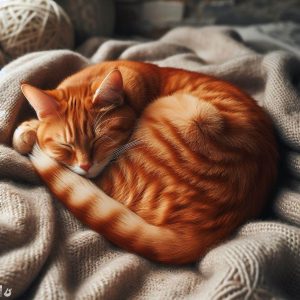Cats stretch in the funkiest positions – front and back legs extended, back arched, rump in the air. As cat owners, we’re used to their quirky stretching routines.
But have you ever wondered exactly why cats feel the need to contort themselves into such odd postures just to stretch?
As it turns out, there are quite a few important reasons behind all that feline flexing. Understanding the science and psychology behind your cat’s stretching will help you support their health and enrich your bond.
In this comprehensive guide, I’ll cover:
- Main reasons behind kitty stretches
- An overview of the different types of stretches cats commonly do
- Tips to encourage healthy stretching habits in your feline
Whether your cat does a big morning full-body extension or random leg stretches throughout the day, you’ll soon understand the meaning behind it. Let’s dig in!
An Overview of Why Cats Stretch So Much
Cats stretch for a variety of physical and emotional reasons. Here’s a quick snapshot of the main motivations behind feline stretching:
- Waking Up – Cats stretch immediately upon waking to get their bodies moving after a long nap.
- Increasing Flexibility – Stretches lengthen muscles and promote flexibility and range of motion.
- Blood Flow – Stretching gets the blood flowing to muscles and joints after periods of inactivity.
- Relieving Tension or Pain – Stretches can relieve bodily tension, soreness, and discomfort.
- Showing Contentment – Long, extended stretches display a cat feeling safe, content, and happy.
- Communicating – Stretching can signal a desire to play or interact with owners.
- Marking Territory – Full body stretches mark territory and show confidence.
Now let’s explore these key reasons in greater detail, looking at the physical and psychological motivations behind your cat’s quirky stretching routines.
Waking Up from a Nap or Sleep
One of the most common times you will notice your cat stretching is right after they wake up from a nap or night of sleep. Sleep causes muscles to relax and compress. Upon waking, stretching helps “reset” the muscles and get them activated and ready for use.
Cats will generally perform a full body stretch from head to tail upon waking. They elongate their spine, extend their front legs, and dig their claws into the ground. This comprehensive stretch stimulates muscles and gets the blood flowing after a long period of rest.
It’s important not to disrupt your cat’s wake-up stretch. Allow them to complete the entire routine before petting, feeding, or playing with them. The stretch helps transition their bodies and minds into wake mode.
Increasing Flexibility, Mobility, and Range of Motion
Stretching provides major physical benefits for feline flexibility and mobility. As natural athletes, cats depend on suppleness and range of motion for activities like:
- Hunting – Pouncing after prey requires flexible hips and back legs.
- Climbing – Muscles and joints need stretching to allow climbing trees and furniture.
- Grooming – Contorting into cleaning positions demands limb dexterity.
- Playing – Cat games involve running, jumping, leaping, and more.
When cats stretch their front and back legs, they are increasing the extension and range of motion of their muscles, tendons, ligaments and joints. This maintains flexibility and limbers up the body for optimal movement.
Targeted Stretching
Cats will also do targeted stretches focused on certain body parts. For example:
- Downward dog stretch extends the hips and back legs.
- Back arching hits the spine and abs.
- Front leg/chest stretches work the shoulders and front limbs.
- Neck stretches loosen up the cervical spine.
These focused stretches work deeper into specific areas and enhance overall flexibility.
Improving Blood Flow and Circulation
Another benefit of stretching is that it gets the blood flowing to muscles and joints. When a muscle group is dormant for a period, blood flow to the area decreases. Stretching signals the body to send oxygenated blood back into the tissue.
This circulation provides nourishment to muscoskeletal tissues. It also removes waste buildup that leads to soreness and stiffness. Stretching post-nap prevents that “sleepy limb” sensation.
For older or less mobile cats, stretching becomes even more important for blood flow. Their circulation may already be compromised, so daily stretching maintains muscle health.
Tip: After a long nap, engage and play with your senior cat to encourage stretching. This boosts blood flow and joint health.
Relieving Muscle Tension, Soreness, and Pain
Stretching elongates muscles fibers and soothes tightness and pain. Cats are prone to muscular soreness and stiffness for reasons like:
- Long naps in one position
- Injuries from falls or accidents
- Arthritis and joint pain
- Old injuries flaring up
- Vigorous play session
Gentle stretching increases space between muscle tissues and vertebrae. This provides tension release and relief from discomfort. Stretching also activates endorphins for natural pain relief.
If you notice your cat doing stretches focused on one area, it may indicate injury or soreness. Pay attention and monitor them to make sure the discomfort resolves. Seek veterinary advice if it persists.
Tip: After playtime, gently stretch and massage your cat’s exerted limbs. This aids muscle recovery.
Displaying Contentment, Security, and Happiness
Cat parents, take note – when your kitty does a long, extended stretch with their back arching and paws reaching forward, they are actually communicating their contented emotional state!
These languorous, relaxing stretches are a cat’s way of demonstrating how safe and satisfied they feel in their environment. A nice big stretch shows your cat is perfectly at ease.
But why does stretching display contentment? The act leaves a cat’s most vulnerable body parts exposed. A cat would only do this when they feel fully secure and comfortable.
So relish those big, happy stretches from your cat. They indicate a feline who feels right at home with you!
Communicating With Their Human
Your cat’s stretches may also serve as a communication method to you, their beloved human servant.
Cats have learned that mimicking human stretching gets our attention. So they will perform an exaggerated stretch directed right at you. This catches your eye and says “play with me” or “feed me” loud and clear!
Cats also incorporate stretching into their greeting ritual. When you return after an absence, expect an enthused kitty stretch as a warm welcome back.
Tip: When your cat does a stretch “at” you, return the gesture with a friendly stretch of your own. This strengthens your social bond.
Marking Territory and Displaying Confidence
The full body stretch where a cat extends their front legs forward while keeping their rump in the air is part of feline body language. This type of stretch marks a cat’s territory and shows confidence.
By elongating upward and occupying maximal space, a cat announces “I own this area”. It proclaims their domain to other cats, animals, and strangers passing by.
This territorial stretch is often accompanied by other body language like raised tails, scent marking, and side rubbing. Your cat is proudly broadcasting their presence and turf ownership.
Know that these territorial stretches are completely normal and not a sign of aggression. In fact, it’s a display of a content cat who feels at home in their space.
The Different Types of Cat Stretches
Now that you know why cats stretch so often, let’s explore the specific types of stretches cats commonly do. Being able to identify the stretches offers insight into your cat’s needs and comfort.
We will cover the typical feline stretch positions along with the muscles targeted by each stretch. Try and observe your cat performing each of these stretches to understand their routines.
1. The Full Body Stretch
This is the classic cat stretch everyone is familiar with. Right after waking, the cat extends their front legs straight out while keeping their back legs in place. They reach forward as far as they can with their paws.
The back arches upwards into a hump. Often the tail will curl upwards too. This completes the full body elongation from head to toe.
Targeted areas: Spine, hips, shoulders, front and back legs
2. Downward Dog Stretch
The downward dog stretch mirrors the yoga pose. The cat sticks their rump up in the air while straightening their front legs on the ground. This creates an inverted V shape with their back.
Hips are maximally extended in this stretch. Some cats will rock their hips back and forth or walk their front paws out further.
Targeted areas: Back legs, hips, core muscles
3. Front Limbs Stretch
For this stretch, kitties extend one front leg straight out while keeping the other bent. They elongate their chest forward and out. Often both front legs will get a turn.
This targets the shoulders, chest, and front leg muscles and joints. It provides relief after hunkering down in one spot for a while.
Targeted areas: Shoulders, chest, front legs
4. Back Limb Stretch
The back limb stretch mirrors the front version. Here cats extend one back leg behind them fully while keeping the other bent. This provides a focused stretch along one hamstring and hip area.
Many cats turn and nibble at the area being stretched to provide an extra soothing massage. Alternate legs to target both back limbs.
Targeted areas: Hips, hamstrings, back thighs
5. Neck Stretch
Cats have incredibly flexible necks, and stretching maintains their wide range of motion. Cats will twist their necks around to target the cervical spine.
Exaggerated head tilting from side to side provides relief after napping with their head curled in one spot for a while. A chin scratch will really get them stretching their neck.
Targeted areas: Neck, cervical spine
6. Back Arch Stretch
For this stretch, cats dip their front legs down while raising their rear end up into the air. Their back curves dramatically inward like a spooked Halloween cat.
This arching motion decompresses the spine and stretches the core abdominal muscles. It may signal overstimulation during play and a need to take a break.
Targeted areas: Spine, abdominals, lower back
7. Leg Shake
Sometimes cats will rapidly shake one of their legs while in a seated position. It looks like their leg is vibrating! This loosens up cramped limbs after prolonged curled up napping.
Shaking their paw out gets the blood flowing too. Make sure leg shaking isn’t a sign of injury though.
Targeted areas: Individual legs
Watch for these common feline stretches during your cat’s daily routines. With patience, you can observe them all. Understanding the stretches will attune you to your cat’s physical needs and wellbeing.
Tips for Supporting Healthy Cat Stretching
With greater insight into cat stretching under your belt, let’s cover some tips for promoting stretching and limberness in your cat:
- Give them post-nap play time – Get your cat moving after long sleeps to reactivate their muscles. Brandish a toy to inspire energetic play with sprints, jumps, and contortions worked in.
- Make stretching a reward – Clicker train your cat to do stretches for treats. This motivates daily flexibility training.
- Incorporate pelvic scratches – Gently scratch and massage along your cat’s lower back and hips to get them extending and moving the rear region.
- Assist with passive stretches – For arthritic or disabled cats, slowly move their legs through stretching motions. But stay within their comfort zone. Consult a vet first.
- Ensure multiple climbing/scratching areas – Place cat trees, towers, and scratching posts around your home so they can fully stretch upwards and scratched downwards often.
- Consider joint supplements – Glucosamine and chondroitin supplements support joint health and flexibility. Ask your vet if recommended for your senior or less agile cat.
With knowledge of feline stretching plus some cat owner tips, you now have greater insight into this endearing and important cat behavior. Understanding your cat’s physical and emotional needs through stretching will help all of you stay happy and healthy. So observe, learn, and support your cat’s stretching routines as a vital part of their daily life.



